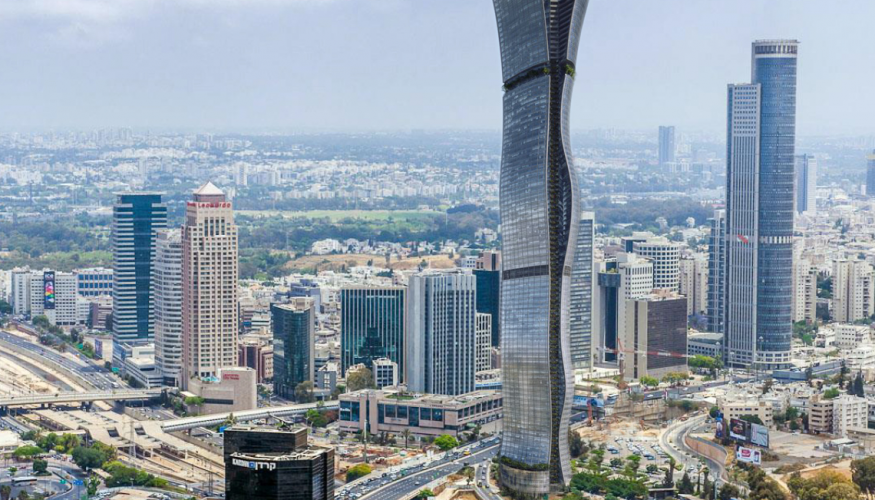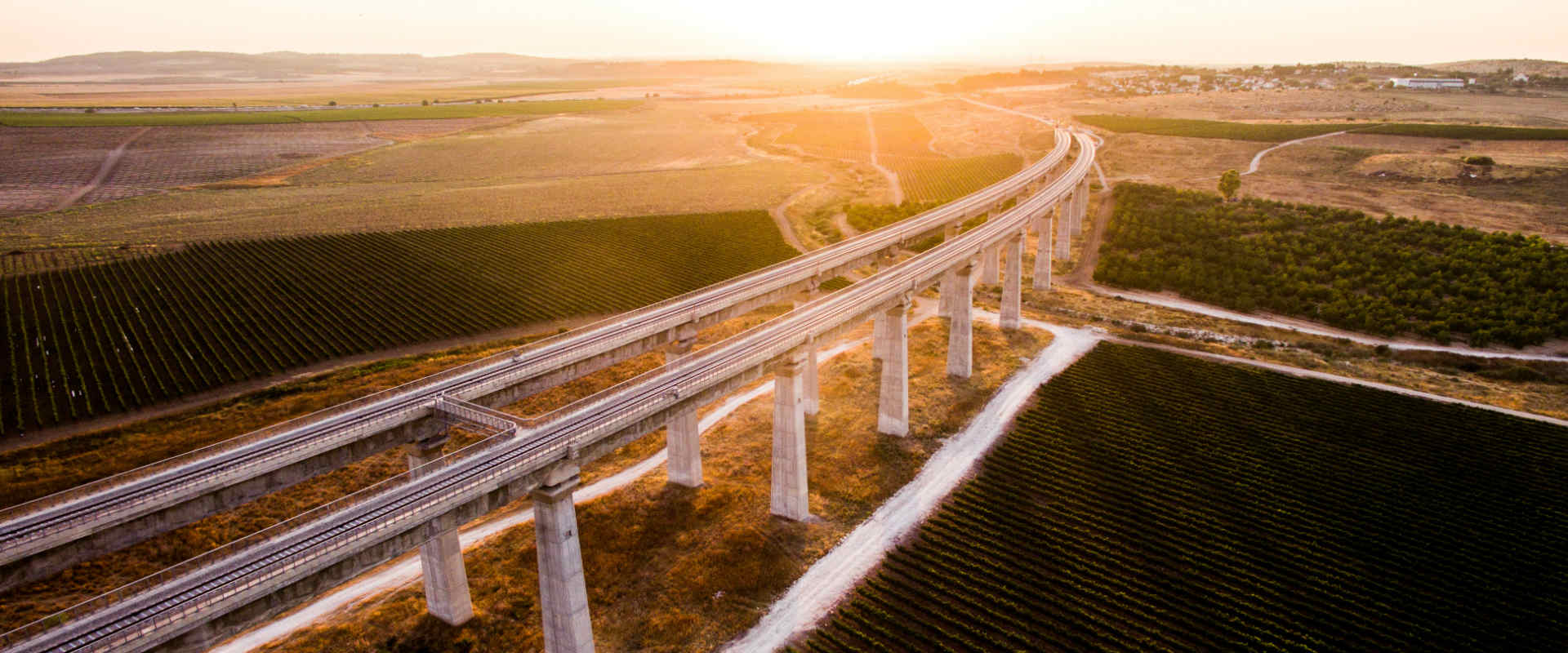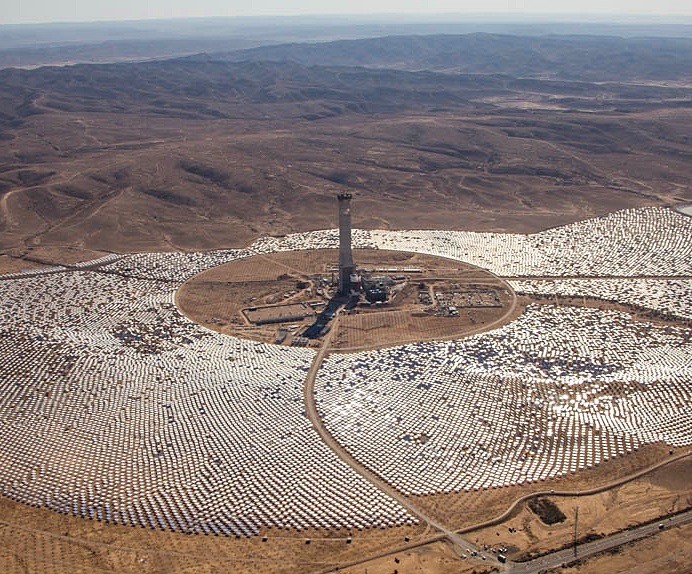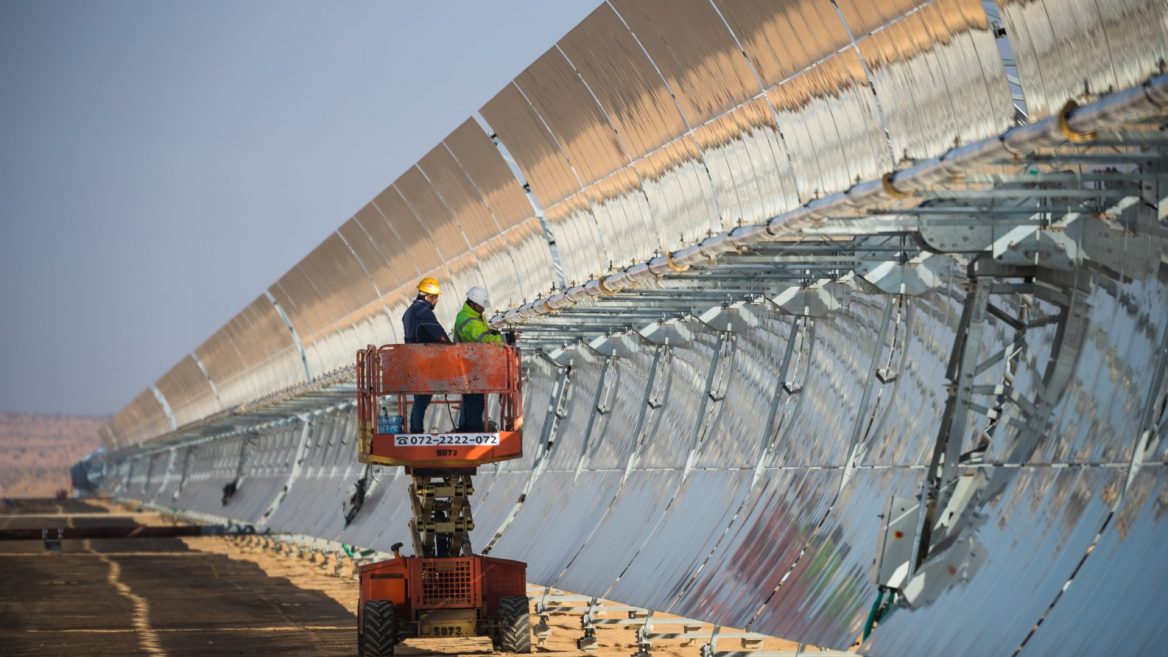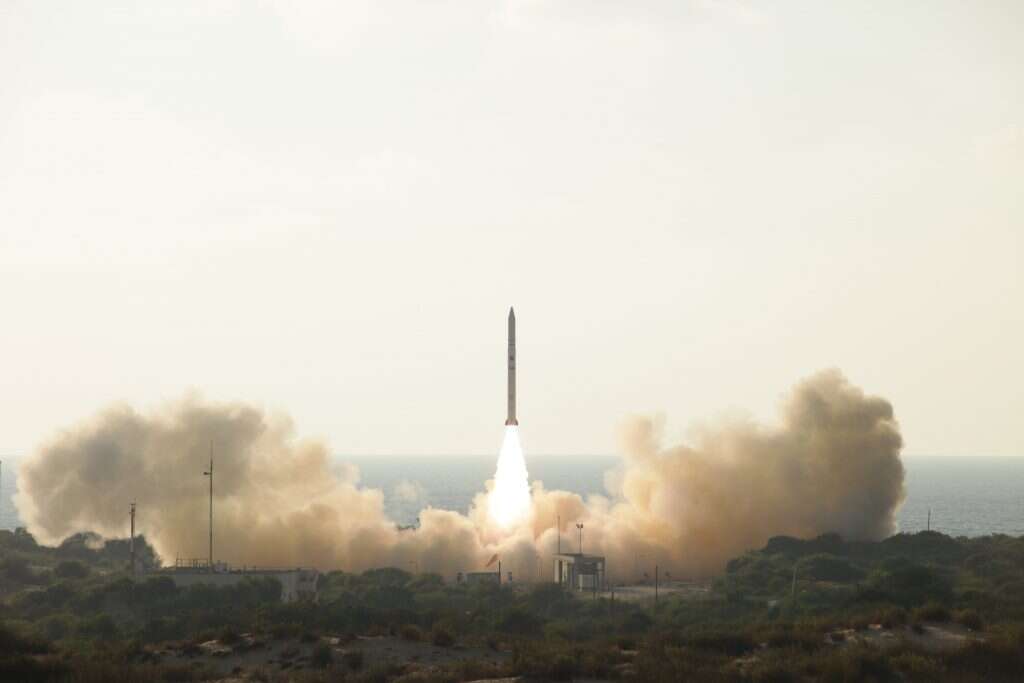When Israel’s first prime minister, David Ben-Gurion, expressed his vision over 60 years ago “to make the desert bloom,” he may not have expected a multi-billion-dollar initiative that combines three massive solar power plants, the world’s tallest solar tower, and a wastewater treatment plant, all housed near a tiny Israeli community of roughly 500 people in the Negev desert.
The ambitious projects were launched in late 2014, following an Israeli government-set objective of having renewable energy contribute to 10 percent of electricity generation by 2020. And almost all are near completion.
The first is a massive, $1.1 billion, 121 MW thermo-solar power plant spread over 988 acres (about 4 square kilometers) of land called Negev Energy. It is made up of 28,000 tons of steel and some 500,000 parabolic mirrors that collect light to be converted to energy. The plant plans to reduce approximately 245,000 tons of carbon dioxide emissions per year – the equivalent of removing 50,000 vehicles from the road – and provide clean power solely from renewable energy to 60,000 households in Israel by 2020.
The second project is a smaller plant across 741 acres (almost 3 square kilometers) built on concentrated solar power, which includes a massive, 820-foot (250-meter) solar tower, the largest such tower in the world and playfully dubbed the “tower of power.” Called Megalim Solar Power, and with an estimated cost of $800 million, it includes a solar field with over 50,000 software-controlled heliostat mirrors that concentrate sunlight atop a solar receiver steam generator.
Nearby, the third project is a 35 MW solar plant based on photovoltaic, or PV, power – that is, the use of solar cells to generate electrical power. The initiative came with an initial investment of some $100 million and is dubbed the Ashalim SUN project.
The fourth initiative, the Ramat Hanegev Cogeneration Waste Water Treatment and Demineralization Plant, is part of a government plan to support the solar facilities which also includes bolstering the infrastructure surrounding the complexes.
http://nocamels.com/2018/01/renewable-energy-negev-solar-power/